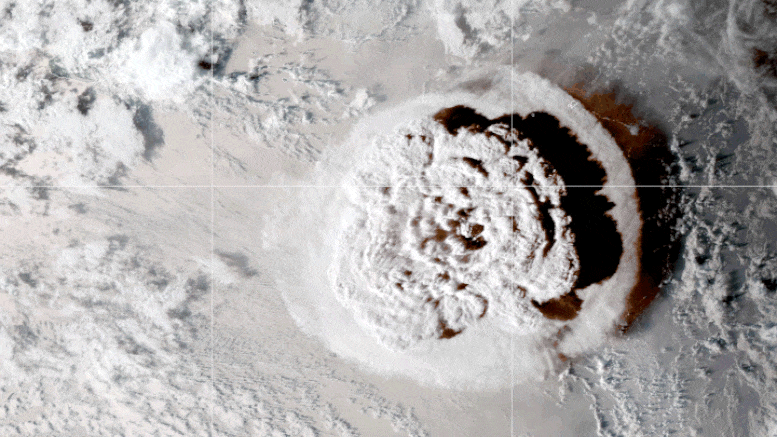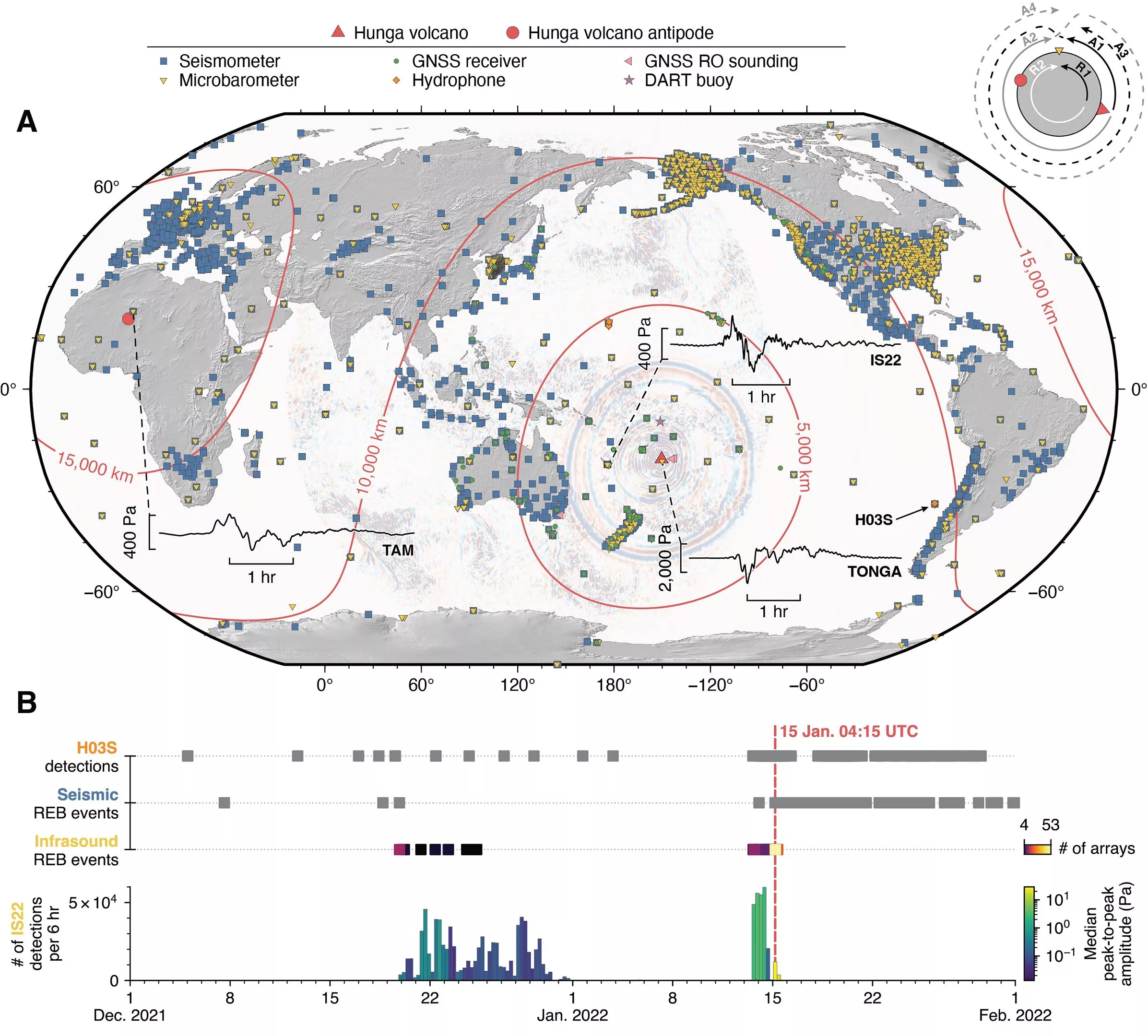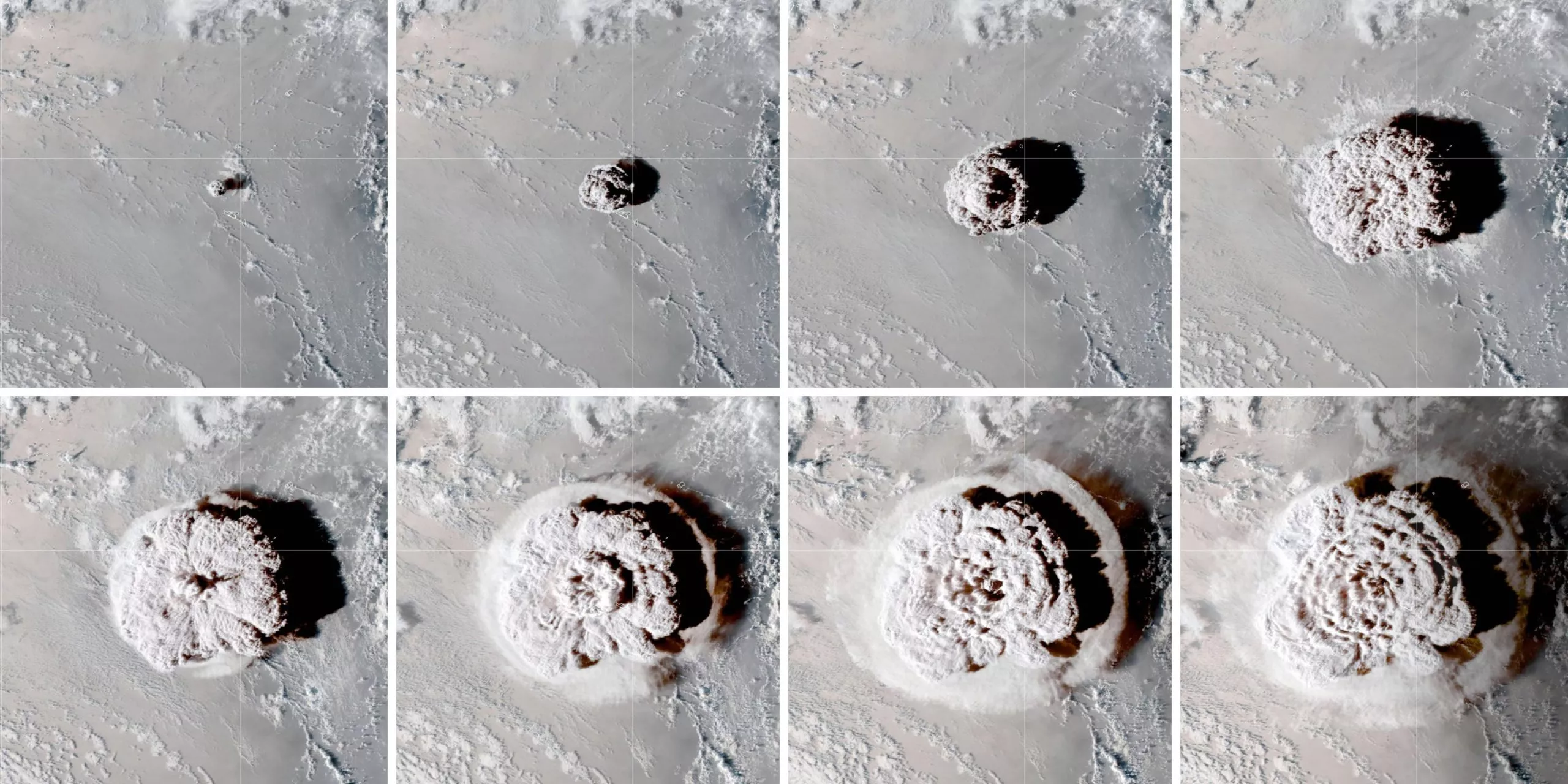On January 15, 2022, the huge eruption of the henga undersea volcano in the South Pacific destroyed the island country Tonga and produced various atmospheric waves - including the roar heard in Alaska 6200 miles (10000 kilometers) away. In addition, it produced a large air pulse, causing an unusual tsunami like disturbance, which reached the Pacific coast earlier than the actual tsunami.

It is reported that these are many observations reported by a team of 76 scientists from 17 countries. They studied the atmospheric waves of the volcanic eruption, the largest known volcanic eruption since the eruption of krakato in 1883. It is reported that the work of the team was compiled in an unusually short time and published in science on May 12, 2022.
David is one of the first four authors of the felks Institute of geophysics at the University of Alaska.

The eruption of Mount henga near Tonga provides unprecedented insight into the behavior of some atmospheric waves. Alaska's dense network of barometers, infrasound sensors and seismometers contributed to the data.
"Our hope is that by understanding the atmospheric waves of this eruption, we will be able to better monitor volcanic eruptions and tsunamis," fee said He is also a coordinating scientist at the Geophysical Institute's Alaska Volcano Observatory.
"Atmospheric waves are recorded in a wide frequency band around the world. By studying this extraordinary data set, we will better understand the generation, propagation and recording of acoustic and atmospheric waves. This has an impact on the monitoring of nuclear explosions, volcanoes, earthquakes and other phenomena," he continued.

The researchers found that the behavior of the erupting Lamb wave was particularly interesting. This type was named after its 1917 discoverer, British mathematician Horace lamb.
The largest atmospheric explosions, such as those from volcanic eruptions and nuclear tests, produce Lamb waves. They can last from minutes to hours. Lamb wave is a kind of guided wave, which propagates parallel along the material surface and extends upward. With the eruption of henga volcano, the waves traveled along the earth's surface and circled the earth four times in one direction and three times in the opposite direction - the same as observed during the eruption of Krakatau volcano in 1883.
"Lamb waves are rare. We have very few high-quality observations of them. By understanding Lamb waves, we can better understand the source and eruption. It is related to the generation of tsunamis and volcanic plumes, and it may also be related to the higher frequency infrasound waves and sound waves produced by eruptions," fee said.

The Lamb wave consists of at least two pulses near henga. The first pulse has a pressure increase of 7 to 10 minutes, followed by a second greater compression and subsequent long-term pressure drop. According to data from the ground station, the wave also reached the earth's ionosphere and then rose to an altitude of about 280 miles at a speed of 700 mph.
According to the paper, compared with the Lamb wave of 1883, one of the main differences of the Lamb wave of henga explosion is that due to the progress of technology and the proliferation of sensors around the world for more than a century, a large amount of data is collected.
Scientists have noted other findings of atmospheric waves associated with volcanic eruptions, including "significant" long-range infrasound waves - sounds whose frequencies are too low for humans to hear. Infrasound waves arrive after Lamb waves and appear audible in some areas.
The paper points out that the audible sound spread about 6200 miles to Alaska, where they heard repeated roars around the state about nine hours after the volcanic eruption.
"I heard these sounds, but I definitely didn't think it was a volcanic eruption from the South Pacific," fee said.
The Alaska report is the furthest documented description of the sound from the source. The paper points out that this is partly due to the progress of global population growth and social connectivity.
Fee said they will study these signals for many years to understand how atmospheric waves are generated and how they travel so well on earth.